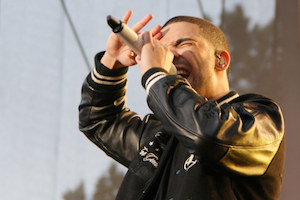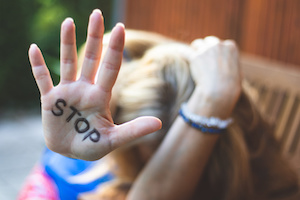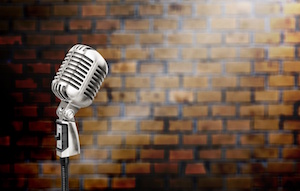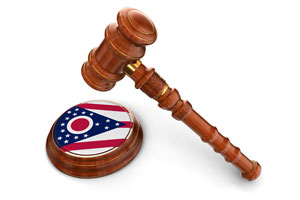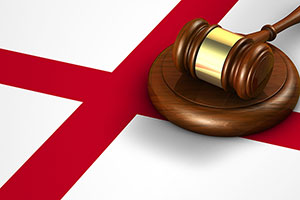Chantal Thoss was convicted of felonious assault in an Ohio court. The only evidence supporting her conviction came from an expert witness. Because the expert overstepped the boundaries of acceptable expert testimony, the Ohio Court of Appeals reversed the conviction.
Trial Evidence
A police officer was dispatched to a home in response to a call concerning an injured baby. Thoss was babysitting in the home. She was distraught. She told the officer that she placed the baby on a couch and left to get a diaper. She heard a thud and the baby screamed. When she returned, she discovered the baby on the floor. He was on his back and his leg was raised and propped against the couch.
Thoss told the officer that the baby’s head snapped back and hit her shoulder when she lifted him. Later, his head began to bobble. He stopped moving and became silent. Thoss called 911 and gave the same information to the dispatcher. The officer had no reason to suspect foul play.
Paramedics soon arrived and took the baby to a hospital for treatment. The treating physician spoke to Thoss and the mother, noting that both were distressed and concerned about the baby’s condition. He saw nothing to suggest the baby had been abused.
A police detective questioned Thoss later in the evening. She provided the same information, albeit in more detail, since the detective asked her more questions than the responding officer.
The detective asked Thoss if she shook the baby and Thoss denied abusing the baby in any way. The officer was aggressive in his questioning but Thoss steadfastly denied that she had shaken the baby. She expressed her fear that she may have harmed the baby inadvertently by picking him up quickly, causing the baby’s head to snap back.
The baby was not yet rolling over or sitting up, but could kick and scoot himself in circles on the floor by using his legs. The detective wondered how the baby fell from the couch if the baby could not roll over. Thoss hypothesized that the baby slid off the leather couch while he was kicking.
The baby was flown to Mercy Hospital in Toledo to treat his intracranial bleeding. He began to have seizures the next day. At the time of trial, two years later, the child was still taking seizure medication. Nerve damage also made it difficult for the child to speak.
The baby was six months old when Thoss called 911. The baby’s mother had been disregarding instructions to bring the baby in for wellness checks after the baby was about one month old.
The detective learned from Dr. Randall Schlievert, Director of Mercy Hospital’s Child Abuse Program, that the child had prior brain bleeds. While that evidence could be indicative of earlier child abuse, the detective conducted no investigation to determine whether other individuals could have been abusing the baby.
Prosecution Expert
Dr. Schlievert testified as a prosecution witness. He described the many symptoms that doctors once identified as evidence of “shaken baby syndrome.” He testified that caregivers usually shake babies because they are frustrated that the baby is crying. He acknowledged that he had no evidence that the baby had been crying. Dr. Schlievert nevertheless attributed the baby’s injury to Thoss having shaken the baby.
Based on a 1993 study of children who fell from cribs or hospital beds, Dr. Schlivert opined that a fall from the couch would not have caused a brain injury. Dr. Schlivert identified another brain injury that was one to several weeks old, but ruled it out as a cause of the baby’s brain damage because the baby exhibited no signs of brain damage until Thoss called 911.
Dr. Schlievert concluded that the baby’s retinal hemorrhages were consistent with shaken baby syndrome, although he admitted that he did not know when the hemorrhages occurred. He acknowledged that they might have occurred a month before Thoss called 911.
Dr. Schlievert acknowledged that whether a prior brain injury makes a baby more susceptible to a new brain injury is a question that divides physicians. Based on the absence of studies that would contradict his opinion, he thought it was unlikely that serious symptoms would develop from a minor injury even if the minor injury aggravated a preexisting injury.
Defense Expert
Dr. Marcus DeGraw, a child abuse pediatrician, testified for the defense. He agreed that the baby suffered from two distinct injuries. He concluded that the second injury occurred on the date the 911 call was made and that the first injury occurred about two weeks earlier.
Dr. DeGraw testified that as a brain injury heals, the pocket of blood between the brain and the skull causes weakness that makes the brain more susceptible to further injury. A modest impact that would not injure a healthy brain can cause severe injury to a brain that has been weakened by an earlier injury.
Dr. DeGraw testified that falling from a couch could have caused sufficient trauma to injure the baby’s brain, given the preexisting brain injury. Dr. DeGraw testified that Dr. Schlievert’s opinion gave insufficient weight to the first brain injury.
Significantly, Dr. DeGraw faulted Dr. Schlievert for overstepping the bounds of an expert witness by acting as a prosecution advocate. Dr. Schlievert knew nothing about the cause of the first injury, which was never investigated, but blamed Thoss for injuring the baby. Dr. Schlievert was not present when the injury occurred and had no way to know what Thoss did or did not do.
Appellate Court’s Review of Evidence
Appellate courts almost always defer to a jury’s assessment of competing expert testimony in a criminal prosecution. In Ohio, however, appellate courts have the power to sit as a “thirteenth juror” and to set aside verdicts and order a new trial when the finding of guilt beyond a reasonable doubt is against the manifest weight of the evidence. Although appellate courts rarely substitute their judgment for that of the jury, this was an appropriate case in which to do so.
The prosecution’s case rested entirely on the expert testimony of Dr. Schlievert. Thoss made no damaging admissions and no witness observed whether the baby was shaken or fell from the couch. Nothing in the evidence suggested that Thoss was the kind of caregiver who would respond to crying by shaking a baby. In fact, nothing in the evidence suggested that the baby was crying or that Thoss had any reason to shake the baby.
Dr. Schlievert’s opinion that a short fall from a couch would not cause brain damage was based on studies that failed to address babies who had prior traumatic brain injuries. The studies failed to provide adequate data to support Dr. Schlievert’s opinion, given uncontradicted evidence that the baby suffered from earlier brain trauma.
Dr. Shlievert acknowledged, and Dr. DeGraw confirmed, that it was impossible to determine the onset date of the baby’s retinal hemorrhage. The presence of a retinal hemorrhage therefore had no relevance to the allegation that Thoss shook the baby.
The court noted that neither the treating physician nor the first investigating officer suspected abuse, that the detective’s aggressive questioning failed to uncover evidence of abuse, and that Thoss’ prompt decision to call 911 and to go to the hospital was inconsistent with an intent to harm the baby. It was only Dr. Schlievert’s opinion that triggered a criminal prosecution, and that opinion was contradicted by an equally qualified expert who explained why the evidence made it impossible to assess blame.
While juries usually resolve conflicts in expert testimony, Dr. Schlievert’s opinion alone was simply not sufficient to overcome reasonable doubt provided of Thoss’ innocence. While the court was unwilling to stay that the prosecution failed to prove guilt beyond a reasonable doubt, the court decided that the conviction was against the manifest weight of the evidence. The court therefore reversed the conviction and granted Thoss a new trial.
Lesson Learned
The appellate court expressed dismay that after Dr. Schlievert expressed the opinion that the baby had been shaken, all investigation stopped. Ignoring the weak factual basis for Dr. Schlievert’s opinion, the police and prosecution immediately decided that Thoss was guilty and did not examine important questions, including the source of the earlier brain injury. A full investigation may have exonerated Thoss.
As Dr. DeGraw explained, the job of a medical expert is to interpret injuries, to explain how they might or could not have occurred, and to place them within a time frame. Doctors are not criminal investigators, regardless of how they are portrayed on television. The doctor’s job is not to blame a particular person for causing an injury. Dr. DeGraw and the appellate court appropriately faulted Dr. Schlievert for identifying Thoss as the person who caused by baby’s injuries.
Experts who serve the prosecution play a vital role in the criminal justice system. The reversal of Thoss’ convictions stands as a reminder that experts must also serve justice. When Dr. Schlievert went beyond his legitimate role as an expert witness, he encouraged a jury to ignore other evidence and to convict a suspect who was likely innocent. Identifying suspected child abuse is important, but fixating on the guilt of one suspect without examining evidence that is inconsistent with that fixation renders an expert an advocate for the prosecution rather than a neutral source of expert information.


